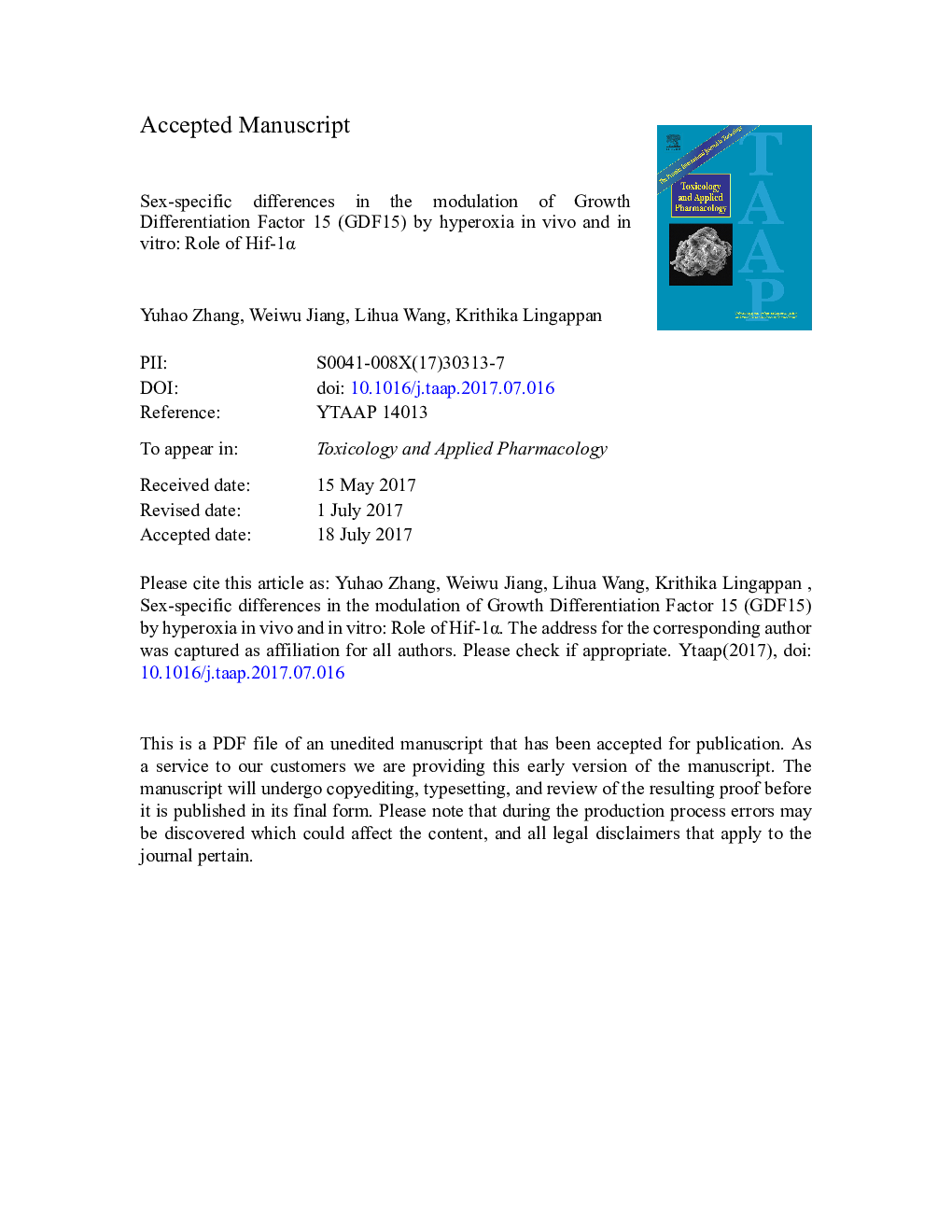| Article ID | Journal | Published Year | Pages | File Type |
|---|---|---|---|---|
| 5558386 | Toxicology and Applied Pharmacology | 2017 | 26 Pages |
Abstract
Male premature neonates are more susceptible than females to the development of bronchopulmonary dysplasia (BPD). The reasons underlying sexually dimorphic outcomes in premature neonates are not known. GDF15 (Growth and differentiation factor 15) is a secreted cytokine and plays a role in cell proliferation, apoptosis, and angiogenesis. In this study, we sought to elucidate the sex-specific expression of Gdf15 in the lung in vivo in neonatal hyperoxic lung injury and its regulation by Hif-1α, and to delineate the differences in GDF15 expression in male and female human umbilical venous endothelial cells in an in vitro model of oxygen toxicity. Following hyperoxia exposure (95% FiO2, PND (postnatal day 1-5: saccular stage of lung development), neonatal male mice (C57BL/6) show increased GDF15 and decreased HIF-1α expression compared to female mice. For the in vitro experiments, male and female HUVECs were exposed to room air condition (21% O2, 5% CO2) or in hyperoxia condition (95% O2, 5% CO2) for up to 72 h. Male HUVECs had greater expression of GDF15 mRNA and protein. To study the inter-relationship between GDF15 and HIF-1α, we measured the expression of GDF15 in H441 cells after HIF-1α knockdown using promoter dual luciferase reporter assay, which showed that HIF-1α and GDF15 expression are inversely related under normoxia and hyperoxia. The results indicate that sex differences exist in the expression and modulation of GDF15 by HIF-1α in neonatal hyperoxic injury both in vivo and in vitro. These differences could explain in part the mechanisms behind sex-specific differences in BPD.
Related Topics
Life Sciences
Environmental Science
Health, Toxicology and Mutagenesis
Authors
Yuhao Zhang, Weiwu Jiang, Lihua Wang, Krithika Lingappan,
